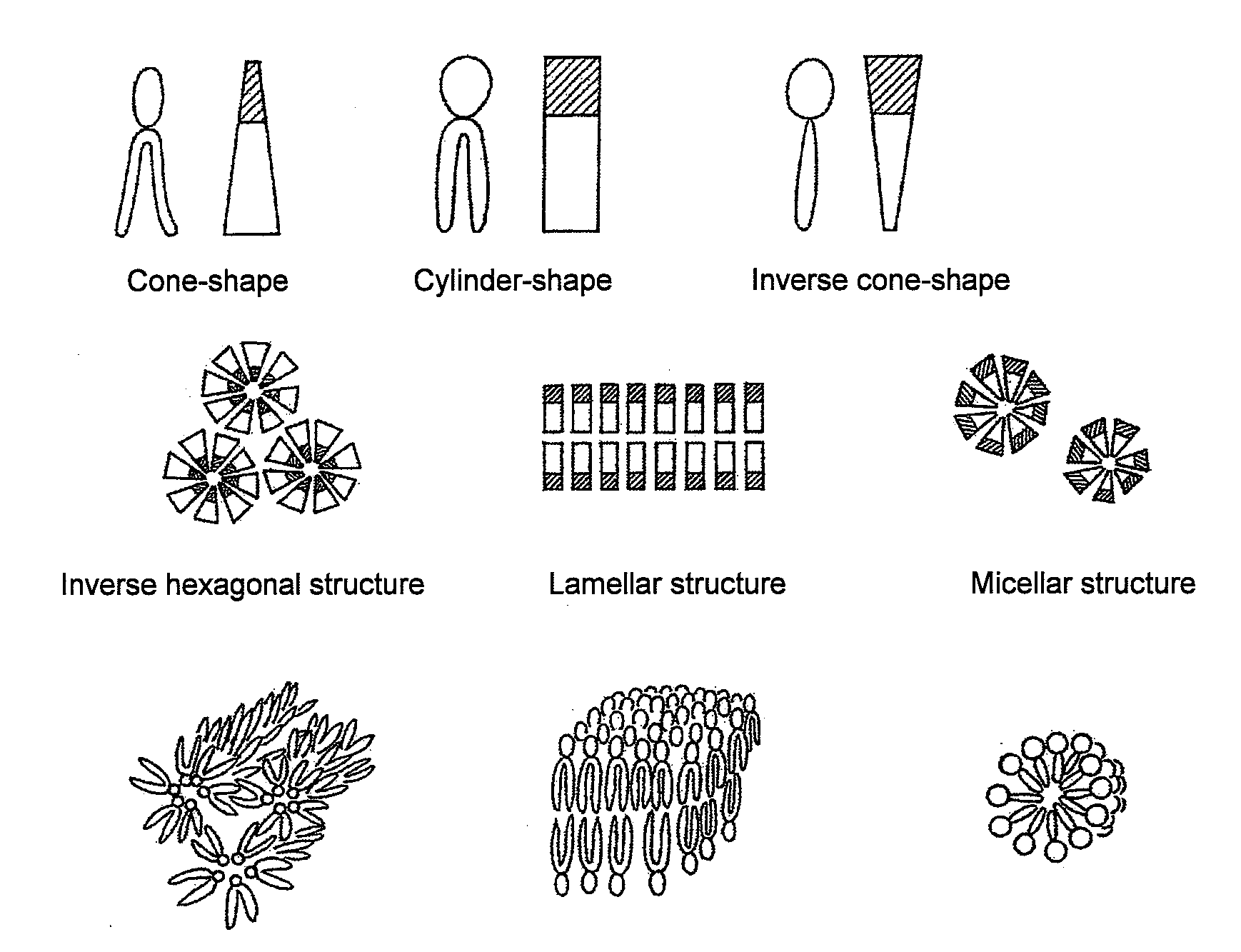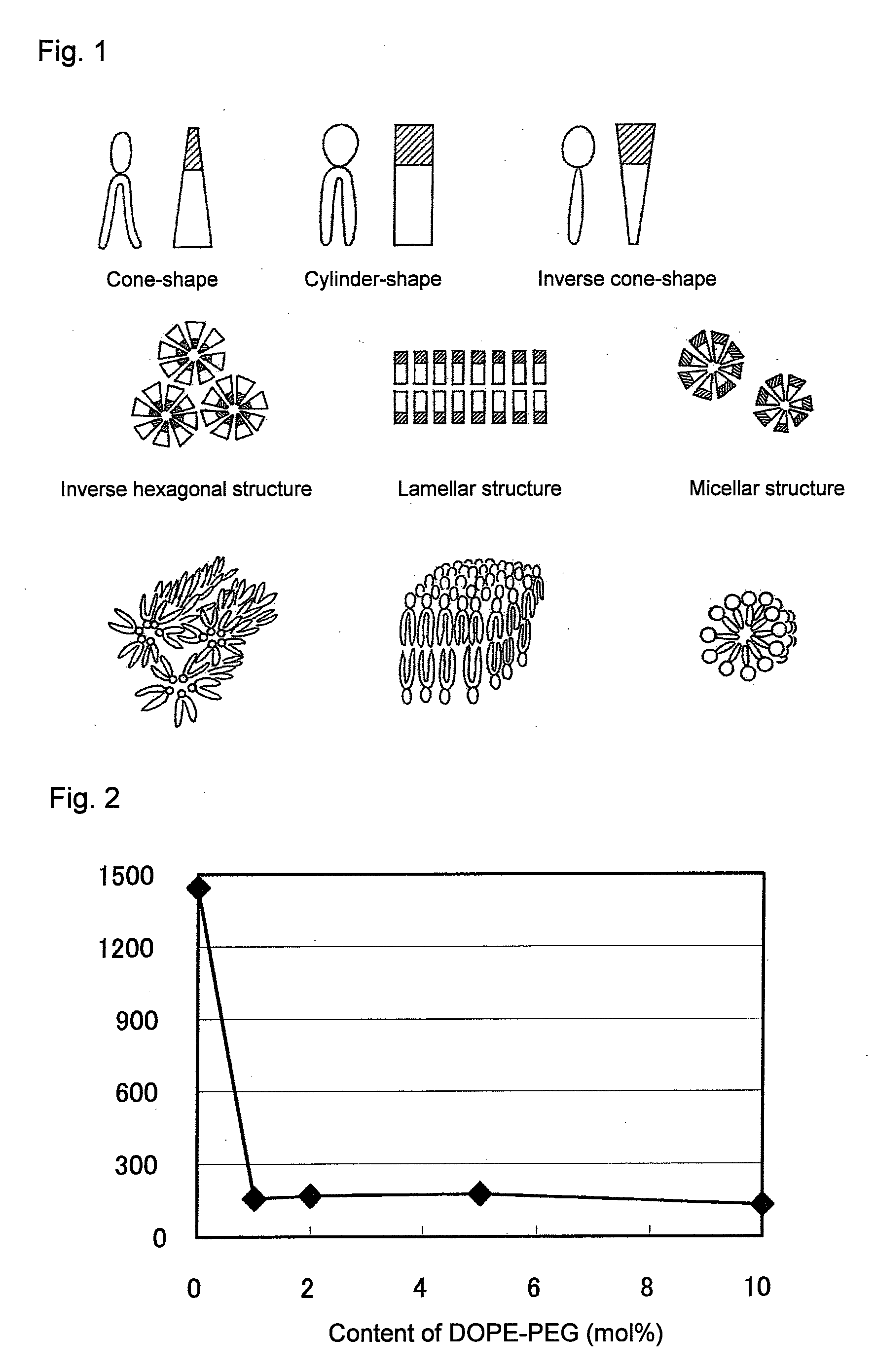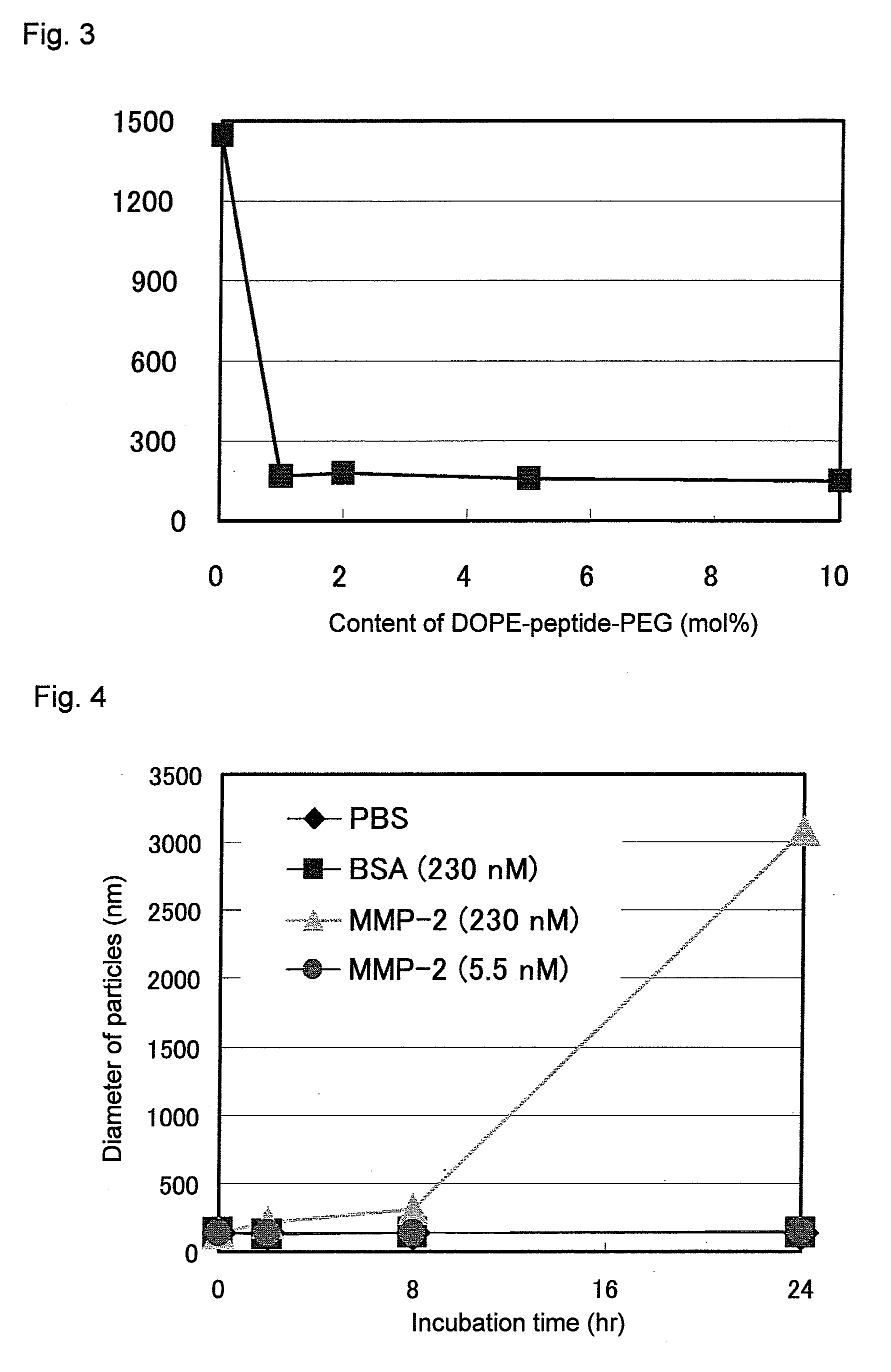Blood Retainable Device Exhibiting Selective Degradability in Tumor Tissue
a tumor tissue and retention device technology, applied in the direction of peptides/protein ingredients, drug compositions, peptides, etc., can solve the problems of poor retention ability, microparticle carriers become difficult to be taken up intracellularly by target cells, leakage of encapsulated substances or aggregation of microparticles, etc., to achieve efficient uptake of antitumor agents
- Summary
- Abstract
- Description
- Claims
- Application Information
AI Technical Summary
Benefits of technology
Problems solved by technology
Method used
Image
Examples
example 1
[0074]NHS was purchased from Wako Pure Chemical Industries. DCC was purchased from Kanto Kagaku. For GPC, used were Tosoh 8120 (TOSOH CORP.), Tosoh HLC-8120 (RI) as a detector, TSK-Gel Super HZ3000 and 2500 as columns, and THF as a carrier. The flow rate was 0.35 mL / minute, and the temperature was 40° C.
[0075]1H-NMR measurement was performed by using JEOL EX-400 (400 MHz). TOF-MS measurement was performed by using Bruker MALDI-TOF-MS Reflex II. A dialysis membrane, Spectra / Por Membren MWCO:1,000, was purchased from Spectrum. A peptide was purchased from the Greiner Japan. The sequence thereof was Gly-Gly-Gly-Val-Pro-Leu-Ser-Leu-Tyr-Ser-Gly-Gly-Gly-Gly, and a molecular weight thereof was 1178.9.
(1) Synthesis of Polyethylene Glycol (PEG)
[0076]In an argon atmosphere, tetrahydrofuran (THF, 20 mL) was put into a recovery flask, and 80 μL of 2-methoxyethanol was added as a polymerization initiator with stirring by a stirrer. Then, 2.9 mL of potassium naphthalenide (0.342 mol / L) was added....
example 2
[0084]It was evaluated whether or not the PEG-peptide-DOPE obtained in Example 1 was cleavable with MMP. For in vitro evaluation, a system was used with which the cleavage of PEG was detected on the basis of an increase in particle diameter. The DOPE molecule has a cone-shaped structure with a hydrophobic group larger than a hydrophilic group, and DOPE molecules alone do not form liposomes, but take micelle-like inverse hexagonal structures in which hydrophobic groups face outward, and in an aqueous phase, the micelles aggregate and are thereby stabilized. Cylinder-shaped lipids form a lamellar structure (bilayer structure), i.e., a liposome structure, whereas inverse cone-shape lipids form a micellar structure (FIG. 1). It is known that when a PEG-lipid is added at a certain ratio to DOPE, the lipids form a lamellar structure and stably form liposomes. Therefore, if a matrix metalloproteinase is made to act on DOPE-containing liposomes prepared by using PEG-peptide-DOPE, thereby th...
example 3
[0091]By using D′MEM added with inactivated FBS (FBS final concentration: 10%), the human fibrosarcoma-derived HT1080 cells were cultured on a sterilized culture dish in a CO2 incubator (37° C., 5% CO2). When the cells reached 70% confluence, the cells were removed from the dish by using 0.5 mM EDTA-PBS, the cell suspension was diluted to a density of 1 to 5×104 cells / mL using fresh D′MEM, and the cells were subcultured on a sterilized dish. In a similar manner, human kidney endothelium-like HEK293 cells were cultured. In the case of the HEK293 cells, the cells were removed from the dish by using 0.05% Trypsin / 0.5 mM EDTA-PBS, and subcultured.
[0092]A compaction body comprising pDNA aggregated with a highly basic peptide such as PLL is formed by an electrostatic interaction between negative charge of phosphate groups of pDNA and positive charge of lysine residues, arginine residues and the like in a peptide. With definition that one phosphate group of pDNA corresponded to charge of −...
PUM
| Property | Measurement | Unit |
|---|---|---|
| Fraction | aaaaa | aaaaa |
| Fraction | aaaaa | aaaaa |
| Fraction | aaaaa | aaaaa |
Abstract
Description
Claims
Application Information
 Login to View More
Login to View More - R&D
- Intellectual Property
- Life Sciences
- Materials
- Tech Scout
- Unparalleled Data Quality
- Higher Quality Content
- 60% Fewer Hallucinations
Browse by: Latest US Patents, China's latest patents, Technical Efficacy Thesaurus, Application Domain, Technology Topic, Popular Technical Reports.
© 2025 PatSnap. All rights reserved.Legal|Privacy policy|Modern Slavery Act Transparency Statement|Sitemap|About US| Contact US: help@patsnap.com



